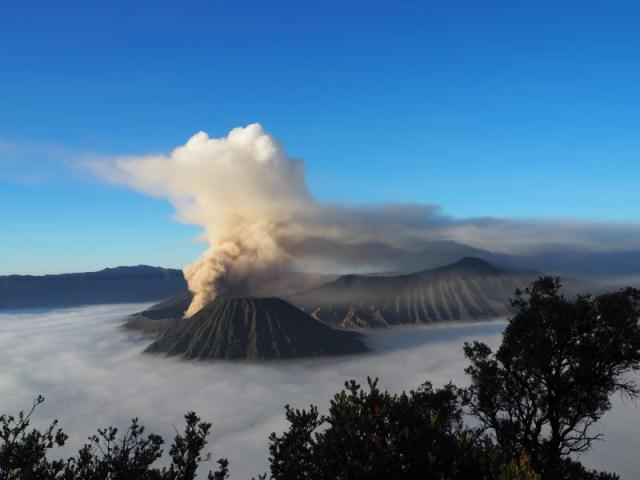
Satellite observations of some of the world’s most remote volcanoes may allow researchers to better predict levels of sulfur dioxide in the atmosphere.
A number of volcanoes worldwide continuously discharge water vapor laced with heavy metals, carbon dioxide, hydrogen sulfide and sulfur dioxide. Of these sulfur dioxide is easiest to detect from space.
A team from Michigan Technological University has discovered that each year volcanoes collectively emit 20 to 25 million tons of sulfur dioxide into the atmosphere. This is more than previous estimates from the late 1990s, but still less than human activities, which generate about two times as much sulfur dioxide into the atmosphere, according to study co-author Vitali Fioletov, an atmospheric scientist at Environment and Climate Change Canada in Toronto.
However, with human emissions on the decline in many countries, the importance of persistent volcanic emissions rises. Volcanoes provide natural background levels of sulfur dioxide that need to be taken into account when studying global atmosphere and regional effects.
Atmospheric processes convert the gas into sulfate aerosols—small-suspended particles in the atmosphere—that reflect sunlight back into space, causing a cooling effect on climate.
Sulfate aerosols near the land surface are harmful to breath and sulfur dioxide is the primary source of acid rain while also being a skin and lung irritant.
However, daily observations tracking sulfur dioxide emissions can also help with eruption forecasting.
“It’s complementary to ground-based monitoring,” co-author Simon Carn said in a statement. “Ground-based measurements of volcanic gases that are more difficult to measure from space, such as carbon dioxide, are crucial.
“But the satellite data could allow us to target new ground-based measurements at unmonitored volcanoes more effectively, leading to better estimates of volcanic carbon dioxide emissions.”
Ground-based data can better distinguish which specific volcano gas plumes come from but while field measurements of sulfur dioxide emissions are increasing, they still remain too sparse to piece together a cohesive global picture.
The new inventory can help researchers observe data from remote volcanoes and provide consistent measurements over time from the world’s biggest emitters.
“Satellites provide us with a unique ‘big picture’ view of volcanic emissions that is difficult to obtain using other techniques,” Carn said. “We can use this to look at trends in sulfur dioxide emissions on the scale of an entire volcanic arc.”
http://www.rdmag.com/article/2017/03/volcano-breath-helps-measure-sulfur-dioxide-space
